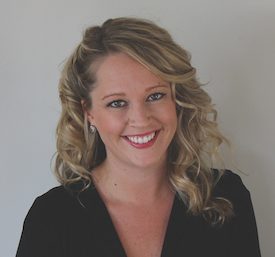Reverse mortgage endorsements have dropped 15.5% in June from the previous month, hitting a low the industry hasn’t seen since 2005, according to data analytics firm Reverse Market Insight.
Total endorsements for reverse mortgages, also known as home equity conversion mortgages, were just 2,838 in June, according to RMI’s monthly HECM Lender’s report.
“The low current volume levels are a direct result of several significant product changes from FHA that restricted access and desirability of the product,” RMI Founder and President John Lunde told HousingWire.
In October 2017, the U.S. Department of Housing and Urban Development, which oversees the HECM program, issued changes to stop the program's perceived drain on the Federal Housing Administration's Mutual Mortgage Insurance Fund. In effect, the changes limit the amount of equity a borrower can access and prevent a number of borrowers from qualifying for the loan.
HUD's latest rule change caught the industry off guard and was just the latest in a long list of revisions that have been issued since 2013. HUD has said the changes are meant to ensure the program's long-term viability, but dealing with persistent regulatory change has hampered lenders’ ability to help borrowers. Since peaking at 114,692 endorsements in fiscal year 2009, reverse mortgage volume has steadily declined. The last fiscal year saw just 39,377 endorsements.
“As an industry, we are still managing the effect of HUD’s October 2017 HECM program changes that impacted the amount of loan proceeds available to borrowers,” National Reverse Mortgage Lenders Association President Peter Bell told HousingWire.
Kristen Sieffert, president of reverse mortgage lender Finance of America Reverse, said that even though the numbers might be down, reverse mortgages are becoming increasingly popular.
“We’ve certainly been seeing an interesting dynamic since the October changes. On the surface this data may suggest that reverse mortgages are declining in popularity among consumers, but we’re finding the opposite to be true,” Sieffert said.
“We’re seeing a continued appetite for the product as part of an overall financial plan taken early in clients’ retirement years," she said. "Given the continued rise in home prices and home equity alongside the rising cost of retirement, we expect reverse mortgages to play an even more critical role in retirement planning.”
Bell says lenders in the HECM space are working to innovate, creating private equity release products that might help turn things around.
“Several top lenders are introducing new propriety loans and product features that can serve older homeowners outside of the HECM program,” Bell said. “I believe that as lenders and originators adapt to the new marketplace, we’ll start seeing upticks in HECM endorsements and proprietary reverse mortgage volume.”
Finance of America Reverse is leading the charge on the proprietary front with its HomeSafe product, a fixed-rate loan that offers borrowers access to up to $4 million of their home equity. By comparison, HECMs conform to FHA loan limits, which max out at $679,650 in high-cost areas.
Other lenders, like Reverse Mortgage Funding and Longbridge Financial are following suit with the creation of their own proprietary reverse mortgages.
“We’re seeing consumers gravitate toward the features we’ve recently introduced for our proprietary HomeSafe reverse mortgage,” Sieffert said. “We remain incredibly optimistic about the potential for HomeSafe and the proprietary market in general.”
Lunde said private, non-agency equity release products might provide an answer to the industry’s problems.
“The path back is likely a combination of non-FHA products being rolled out to address more of the potential borrowers with a potentially better origination process and pricing benefits as the consumer perception of the product continues to improve,” Lunde said. “All that is, of course, easier said than done, but those are the broad strokes.”
Bell said despite the continued downward trend, he remains optimistic.
“Our industry has weathered many storms over the last 30 years, and there’s no reason to believe that this will be any different.”






